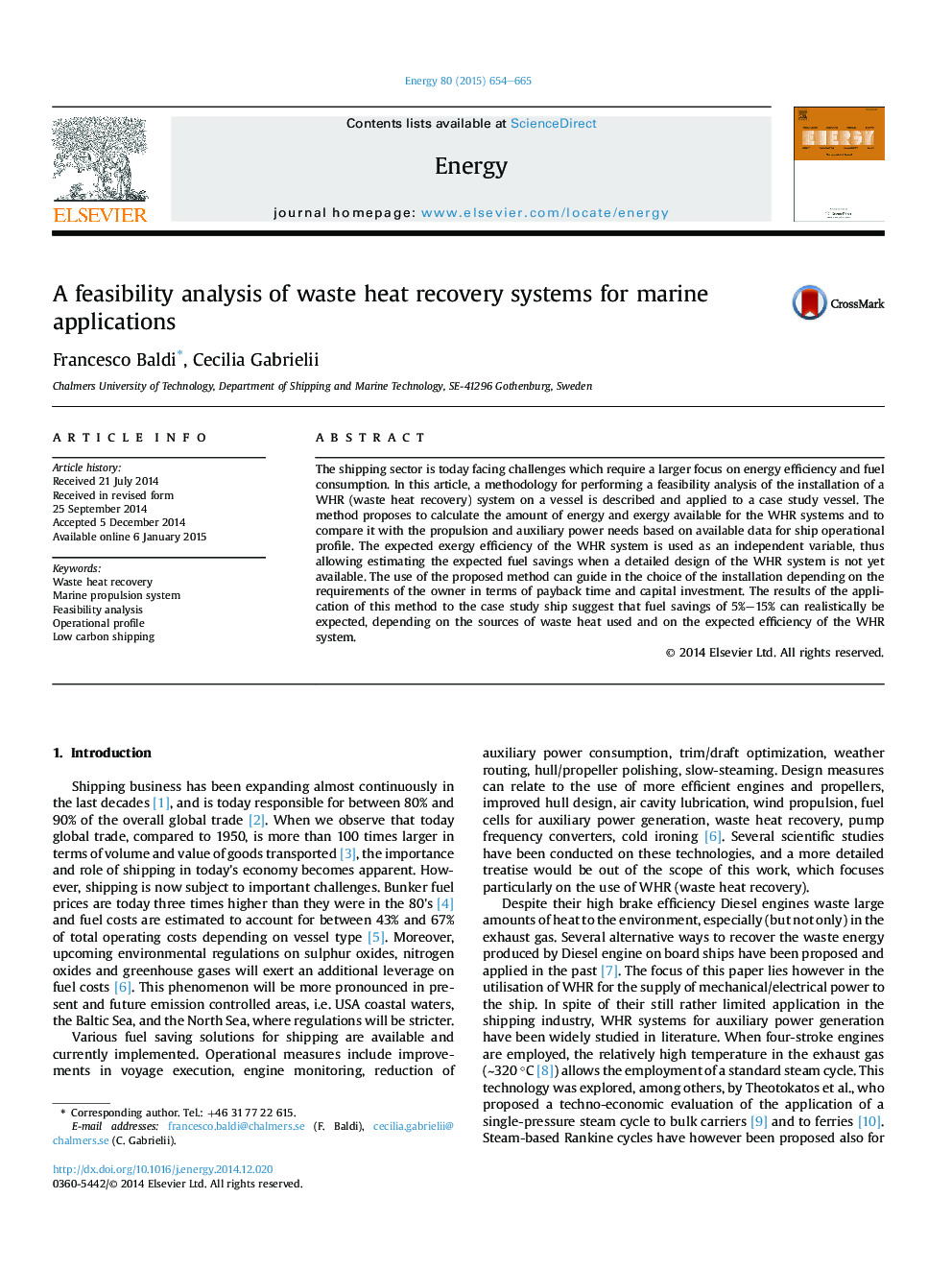| Article ID | Journal | Published Year | Pages | File Type |
|---|---|---|---|---|
| 1732040 | Energy | 2015 | 12 Pages |
•Method for simple estimation of benefits from WHR on ships.•High detail account of ship operational profile is included in the analysis.•Detailed knowledge of the WHR system is not required; its exergy efficiency is used as independent variable.
The shipping sector is today facing challenges which require a larger focus on energy efficiency and fuel consumption. In this article, a methodology for performing a feasibility analysis of the installation of a WHR (waste heat recovery) system on a vessel is described and applied to a case study vessel. The method proposes to calculate the amount of energy and exergy available for the WHR systems and to compare it with the propulsion and auxiliary power needs based on available data for ship operational profile. The expected exergy efficiency of the WHR system is used as an independent variable, thus allowing estimating the expected fuel savings when a detailed design of the WHR system is not yet available. The use of the proposed method can guide in the choice of the installation depending on the requirements of the owner in terms of payback time and capital investment. The results of the application of this method to the case study ship suggest that fuel savings of 5%–15% can realistically be expected, depending on the sources of waste heat used and on the expected efficiency of the WHR system.
